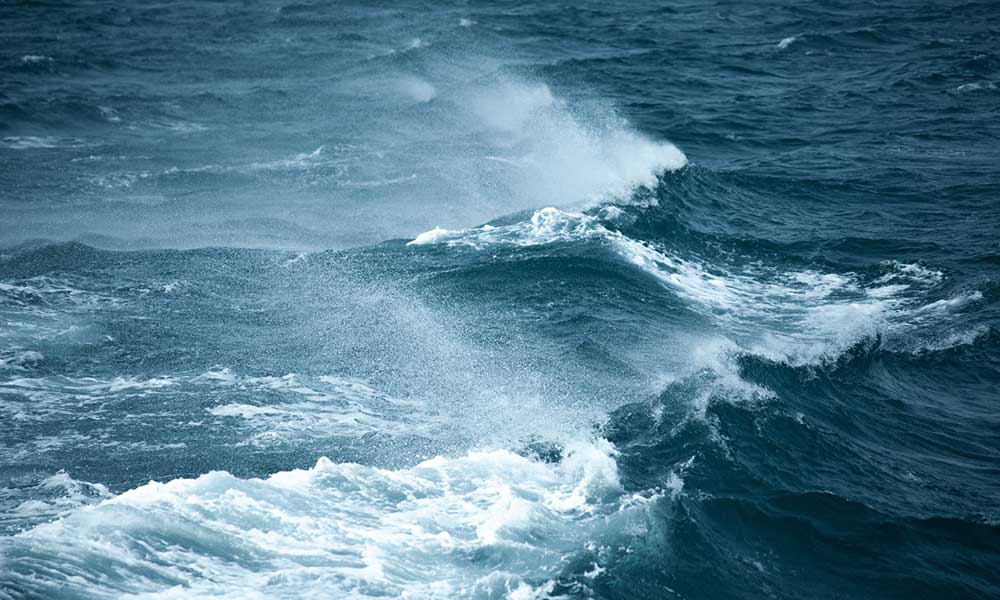The world has many beautiful wonders, including ones you can’t see, such as the wind.
Although the Roaring 40s, Furious 50s, and Screaming 60s sound like an ideal good time or a pretty cool rock band, these are names for powerful winds.
Here’s what you need to know about these winds and the role they play on planet Earth.
What Are The Roaring 40s?
You’ll find the roaring 40s in the Southern Hemisphere, approximately between latitudes 40° and 50° near the equator.
This type of wind is a combination of variables, such as the Earth’s rotation, warm air movements, and the almost absence of landmasses. Let’s put things into perspective.
Near the equator, warm air rises and has a tendency to make its way toward the North and South Pole.
In this instance, the temperature is not heated by the sun, making the temperature extremely cold.
As these Roaring 40s winds travel to the south of the equator, they are pushed by cold winds, accelerating them because there are no windbreaks.
Thanks to the help of the Earth’s rotation, the winds deflect to the south and evolve to high winds that revolve around the South Pole.
Many people follow the rule of thumb that the further south you travel, the stronger the winds become.
What Are The Furious 50s?
The Furious 50s are winds that are closer than the Roaring 40s winds near the South Pole.
These strong winds are found between latitudes 50° and 60°.
The Furious 50s, like the Roaring 40s, are part of the westerly oceanic current zone, known as the West Wind Drift.
The West Wind Drift is also referred to as the surface currents in the Indian, Pacific, and Atlantic Oceans move these warm waters south, then travel eastward, joining the Circumpolar Current.
What Are The Screaming 60s?
The Screaming 60s are found 60° south of the equator.
These types of winds are excessively strong and like the Roaring 40s and Furious 50s, the Screaming 60s accompany the Southern Ocean, near Antarctica.
This area is prone to high winds and extreme waves. These wind types helped create the shipping routes of the past.
Today, these treacherous winds create challenging obstacles that are navigated in various ocean races.
Winds From The Past And Present
In previous times, the Roaring 40s, Furious 50s, and Screaming 60s created the shipping routes for sailors.
Today, these same winds make challenging obstacles for participants in ocean races.
Sailors created a saying for these severe winds; “Below 40 degrees south, there is no law, and below 50 degrees south, there is no God.”
There are a few cities that are located in the depths of the Roaring 40s winds, such as Wellington.
FAQs About The Strong Winds South Of The Equator
Here’s more insight into the wicked winds found south of the equator.
What Are The Furious 50s?
The Furious 50s are winds that occur between the latitudes of 50° and 60° south of the equator.
Why Are Westerlies Called Furious 50s?
Westerlies are called Furious 50s because of how severe the winds are close to the equator. The Furious 50s are found 50° south of the equator.
How Did The Roaring 40s Get Its Name?
The Roaring 40s got its name from the area at which they occur; 40° and 50° south of the equator in the Southern Hemisphere.
Why Is The Southern Hemisphere So Windy?
It’s excessively windy in the Southern Hemisphere because of the Earth’s spin.
There is more landmass in the Northern Hemisphere than in the Southern Hemisphere.
Because of the absence of landmass in the Southern Hemisphere, winds can blow freely without having anything in the way to disrupt their flow.
How Tall Are the Waves In The Roaring 40s?
The continuous strong winds of the Roaring 40s create open-ocean waves that exceed 30 feet. (10 meters).







